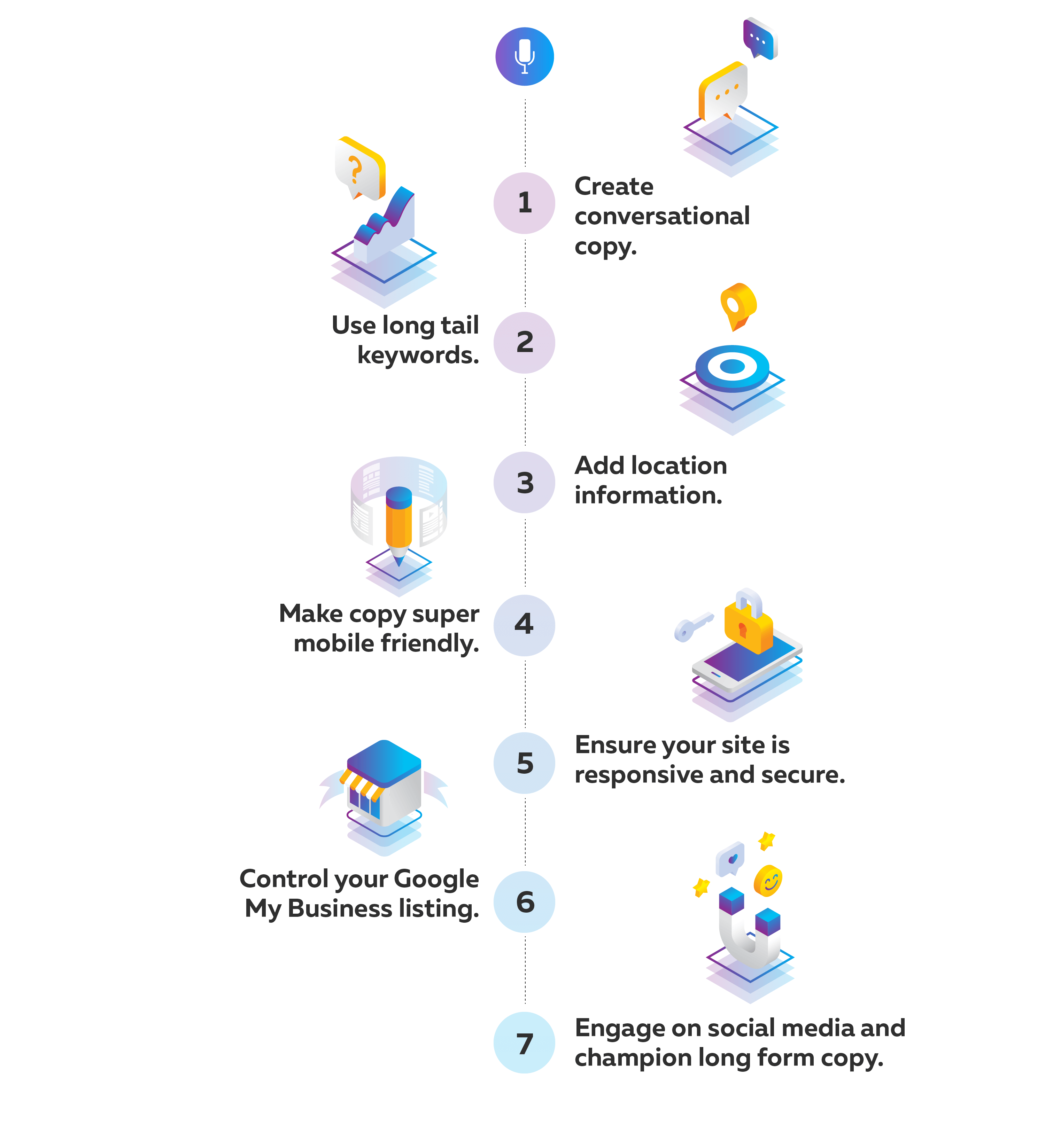


“Hey, Goolexiri. Let’s rewind!”
Around 100,000 years ago, give or take a day, humans developed spoken language. It then took about 90,000 for us to figure out how to write that spoken language down. (NYT)
Johns Hopkins University cognitive scientist Brenda Rapp presented findings that suggest there are “two quasi-independent language systems in the brain.” That is, speaking and writing seem to be the work of two different parts of your brain.
Reverse the human story and you have the computer story, especially as it relates to search. In the beginning, there were words, and then voice.
And as search moves more towards speech, your search engine optimization (SEO) practices are going to have to adapt and expand.
But don’t be scared. Tweaking your content for voice searching will make your online content more accessible to everyone.
Wonder how your content stands up? Ask us (get it?) for a free content scorecard review.
Voice search is just for ecommerce, right?
Most people think voice search is just an ecommerce thing. It’s easy to believe that with OC&C predicting $40 billion in voice-assisted online shopping in 2022 (twenty times larger than their 2017 findings). At the beginning of 2019, Amazon reported over 100 million voice assistant devices sold with Alexa built in. And since Amazon is one of the biggest ecommerce companies in the known universe, you might think “voice search is just an ecommerce thing.”
Well, Adobe’s State of Voice Assistants study found that 30% of those surveyed use a voice assistant for ecommerce. But that was just slightly higher than the 28% who use it to research store information. And, speaking of research, 47% report using their voice assistant to search for and research products, which matches the 47% who use it for general search.
Adobe’s report shows that voice search is being used to find out information about things to buy, but not so much doing the actual buying. It also shows that almost half of all respondents report using voice search for … just search.

But that’s not all. By 2021, an estimated 40% of users will use a voice assistant as their main search tool. And once they have searched, 37% will share their positive experiences. To make sure your business doesn’t fall behind, get your website voice search friendly now.
Voice search impacts SEO
For example, once speech begins to develop in a child, as any parent can attest, the questions start. Children explore their world by asking for information. Think of these little humans as the perfect example of someone using voice search.
When people search online the traditional way, they input short search terms: “Safest cars,” “Ugly cats,” “Brand strategy” (By the way, We can do that!). We’ve been trained to base our SEO around this online pidgin language. We build content surrounding and focusing on those little terms. We make sure they appear all the places on our website they should to show we know what we’re talking about. They are the terms we champion on social media. (#hellohashtags!)
But our current SEO methods will fail due to how people use voice search.
You don’t just shout “Ugly cats!” to your smart speaker. You say, “Hey Goolexiri, what is the ugliest cat in the world?” Just like the developing child, you ask questions of your voice assistant. You ask full questions and expect full answers.
Optimizing for voice search
The key to surviving the voice search revolution is adjusting your thinking. For optimizing SEO for voice searches, you have to think like a searcher.
Here are seven tips to get you on the road to search optimization for voice.

These seven steps are also a great way to tidy up your regular SEO, so it’s a win-win: Optimize for standard search engines and be in the vanguard of those sites optimized for voice search.
Want even more conversation?


